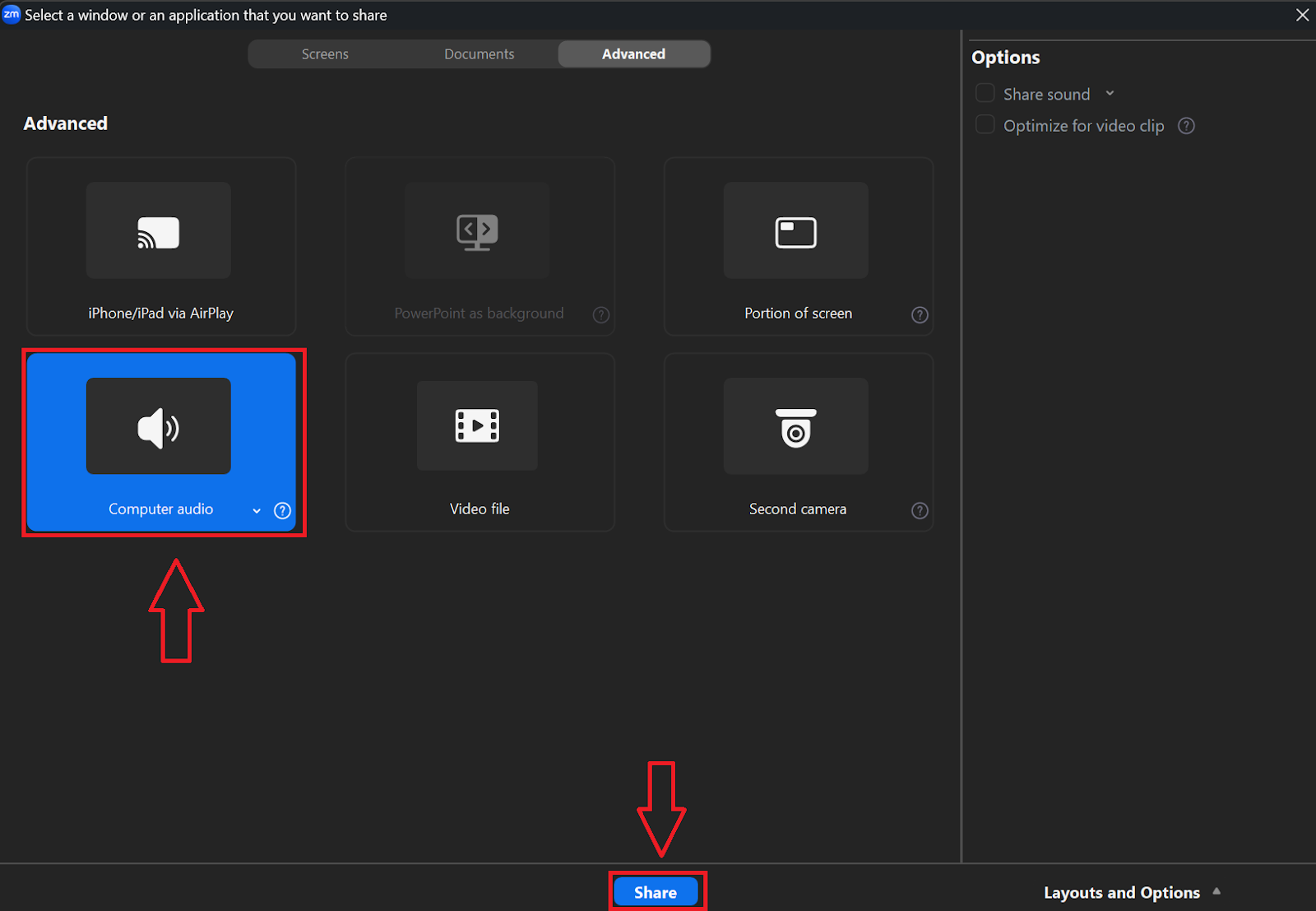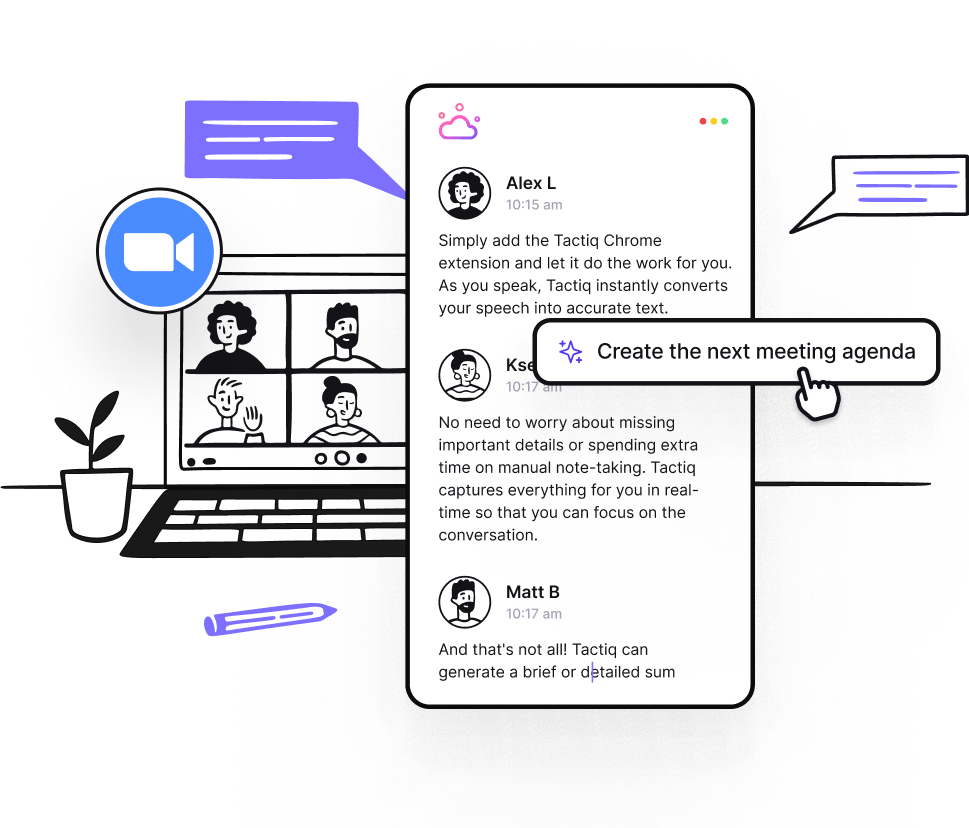Play Music on Zoom: Step-by-Step Guide in 2025
August 11, 2024
August 11, 2024
June 12, 2025
June 12, 2025
When it comes to hosting virtual music sessions, Zoom has become an indispensable tool for musicians, educators, and performers alike. This comprehensive guide will walk you through everything you need to know about using Zoom for your music needs, from understanding its core functionalities to optimizing audio settings for high-quality sound. Whether you're collaborating with other artists, teaching music lessons, or performing live, this guide will help you make the most of Zoom’s features to ensure your sessions are as smooth and professional as possible.
For more detailed tips and resources, check out our guides on how to test Zoom before a meeting, using AI note-taking with Zoom meetings, and finding Zoom recordings.
What is Zoom and Why Use it for Playing Music?

- Definition of Zoom and its core functionalities: Zoom is a video conferencing tool that allows people to connect over the internet. It supports video, audio, and screen sharing for meetings, webinars, and virtual events. With Zoom, you can host meetings with up to 1,000 participants, share your screen, and record sessions for later use.
- Benefits of using Zoom for music sessions: Zoom’s widespread use makes it an ideal platform for virtual music sessions. It allows musicians to connect with their audience or collaborate with other artists regardless of location. The platform supports real-time interaction, making it perfect for live performances, music lessons, or band rehearsals.
- Overview of Zoom's audio capabilities: Zoom offers several audio settings, including options for high-quality sound and reducing background noise. By adjusting these settings, you can enhance your music sessions. Zoom also allows users to share computer audio during screen sharing, which is crucial for playing music directly from your computer.
Key terms:
- Latency: The delay between when a sound is produced and when it is heard by the listener. Low latency is crucial for real-time music collaboration.
- Audio quality: Refers to the clarity and fidelity of the sound. High audio quality ensures that your music sounds good to your listeners.
- Synchronization: Ensures that all participants hear the music at the same time, which is essential for collaborative performances.
Understanding these terms helps you optimize your Zoom music sessions. By configuring your audio settings correctly, you can minimize latency, improve audio quality, and ensure synchronization.
Why Configure Audio Settings for Music on Zoom?
- Importance of audio settings for optimal sound quality: Proper audio settings are key for ensuring your music sounds clear and professional. Zoom’s default audio settings are designed for speech, not music. By customizing these settings, you can make sure your audience hears every note and beat as intended. This is especially important for music teachers, performers, and anyone who wants to share high-quality sound.
- Effects of improper audio configuration on music sessions: If you don’t adjust your settings, Zoom might treat your music as background noise and try to cancel it out. This can lead to distorted sounds, dropped notes, or uneven volume levels. Such issues can ruin a live performance or make it hard for students to follow along in a music lesson.
- Search for "best Zoom audio settings for music": To achieve the best sound quality, search for the "best Zoom audio settings for music." This includes enabling the "Original Sound" feature, which preserves your microphone’s audio without additional processing. Also, consider adjusting settings like echo cancellation and background noise suppression to the lowest levels.
- User experience improvements through proper settings:
- Enable Original Sound: Go to your Zoom settings and turn on the "Original Sound" option. This stops Zoom from altering your device’s audio, keeping your music clear and natural.
- Adjust Echo Cancellation: Lower or disable echo cancellation, especially if you use headphones. This reduces unwanted effects that can distort your music.
- Set Background Noise Suppression to Low: Background noise suppression is excellent for speech but can interfere with music. Set it to low to avoid losing any musical details.
- Use High Fidelity Music Mode: If available, enable this mode for the best possible audio quality. It uses more bandwidth but ensures every computer sound comes through clearly.
By following these steps, you’ll see a significant improvement in how your music sounds over Zoom. Proper configuration transforms the listening experience, making it enjoyable and professional for everyone involved.
How to Set Up Your Zoom Account for Music Sessions
Configuring Audio for Music and Singing
Step-by-step guide to accessing audio settings: Follow these steps to start optimizing your audio settings for music on Zoom.
- Open Zoom and sign in: Begin by opening the Zoom application and signing in to your account.
- Access Settings: Click on your profile picture in the top right corner and select “Settings” from the dropdown menu.
- Navigate to Audio: In the settings menu, click on the “Audio” tab to find all the audio-related options.
- Enable Original Sound: In the audio settings, select the option labeled “Original Sound for Musicians.”
- Use during meetings: During a Zoom meeting, you’ll see a button at the top right corner “Original Sound for Musicians” Click this to enable it and ensure your music sounds as intended.

Adjusting echo cancellation and noise suppression settings: Fine-tuning these settings ensures that Zoom doesn’t mistake your music for background noise.
- Echo Cancellation: In the audio settings, click on “Advanced” to find the echo cancellation options. Set this to “Low” or disable it if you’re using headphones.
- Noise Suppression: Still in the advanced settings, set noise suppression to “Low” to prevent Zoom from filtering out parts of your music.
Advanced Audio Settings
Enabling high fidelity music mode: High fidelity music mode is designed to enhance the audio quality specifically for music.
- Find high fidelity music mode: In the advanced audio settings, look for “High fidelity music mode.” Check the box to enable it.
- Understand the trade-offs: Note that this mode uses more CPU and bandwidth, so ensure you have a stable internet connection.
Using professional audio equipment with Zoom: To achieve the best sound quality, consider using professional audio equipment.
- External Microphone: Use a high-quality USB or XLR microphone. These microphones capture more detail and offer better sound clarity.
- Audio Interfaces: If using an XLR microphone, connect it through an audio interface. This allows for better sound control and higher fidelity.
- Headphones: Use wired headphones to monitor your device’s audio in real-time. Wireless headphones can introduce latency, affecting synchronization.
By following these steps and utilizing advanced settings, you can significantly improve the sound quality of your music sessions on Zoom. Proper setup ensures that every note and beat is heard clearly, providing a better experience for both you and your audience.
How to Share Music During a Zoom Meeting
Step-by-step guide to sharing your music: Follow these steps to ensure your music is shared clearly during your Zoom call.
- Prepare your music: Have your music file or streaming service ready on your computer. Ensure it’s easily accessible.
- Open Zoom and join a meeting: Start or join a Zoom meeting where you plan to share audio or music.
- Access the Share Screen function: Click on the “Share Screen” button located at the bottom of the Zoom window.
Using the 'Share Screen' function to share computer audio: This function allows you to share the sound from your computer directly.
- Select the 'Advanced' tab: In the screen sharing options, click on the “Advanced” tab at the top.
- Choose 'Computer Audio': Select the option labeled “Computer Audio.” This ensures that only your computer's audio is shared without showing your screen.
- Click 'Share': After selecting the correct option, click the “Share” button to begin sharing your computer audio.

Optimizing audio sharing settings for high-quality sound: Make a few more adjustments to ensure the best sound quality, especially when you play background music.
- Adjust volume levels: Ensure your computer’s volume is at an appropriate level. Too high or too low can affect the audio quality.
- Disable unnecessary notifications: Turn off any computer notifications that might interrupt the audio. This prevents unexpected sounds from playing during your session.
- Use a wired connection: For better stability, use a wired internet connection instead of Wi-Fi. This reduces the chance of audio dropouts.
Troubleshooting common issues with audio sharing: If you encounter problems, these tips can help resolve them.
- Check audio settings: Ensure that the “Share Computer Sound” option is checked. You can find this in the screen sharing settings.
- Test your setup: Before the meeting, do a test run. Play music and check that it’s audible to participants.
- Update Zoom: Make sure your Zoom application is up to date. Outdated versions might lack important audio features.
- Verify permissions: Ensure Zoom has the necessary permissions to access your microphone and speakers. This can be checked in your computer’s privacy settings.
By following these steps, you can effectively share high-quality sound and music during your Zoom meetings, providing an enjoyable experience for all participants.
{{rt_cta_ai-convenience}}
Why Use Tactiq for Your Zoom Music Sessions?

Tactiq is an advanced tool designed to enhance your Zoom music sessions with live transcriptions, AI-generated summaries, and customizable prompts. Here's how Tactiq can improve your experience:
- Instant Transcriptions and AI Summaries: Tactiq provides real-time transcriptions and generates AI summaries during your music sessions, ensuring you capture key points without manual note-taking. This is crucial for song arrangements, feedback, and lyric discussions, allowing immediate review and sharing of content.
- AI Meeting Kits and Prompts: It offers AI meeting kits and customizable prompts to streamline follow-up tasks, such as writing feedback emails or organizing session notes, making your workflow more efficient.
- Post-Meeting Follow-Up: Tactiq’s AI-powered assistant creates detailed summaries and follow-up emails, reducing the time and effort needed for post-session tasks. This helps you stay organized and focused on creative aspects.
- Seamless Integration: Tactiq integrates with Zoom and other productivity tools, automating follow-up activities with reusable one-click actions, ensuring you maximize your meeting productivity.
By leveraging Tactiq’s powerful features, you can transform your Zoom music sessions into efficient, well-documented, and productive experiences.
Zoom lets you connect with musicians, students, or audiences anywhere, supporting real-time collaboration and live performances. You benefit from features like screen sharing and session recording, making your music sessions interactive and accessible.
Enable 'Original Sound for Musicians,' set echo cancellation to low or off, and adjust noise suppression to low. These steps ensure your music comes through clearly, so your audience hears every detail as intended.
Use a high-quality external microphone, an audio interface for XLR mics, and wired headphones to reduce latency. Enabling high fidelity music mode in Zoom further enhances sound clarity, giving your listeners a professional experience.
Click 'Share Screen,' go to the 'Advanced' tab, and select 'Computer Audio' to share music directly from your device. This method ensures everyone hears your music clearly, without needing to see your screen.
Tactiq provides live transcriptions, AI-generated summaries, and customizable prompts, so you never miss key points or feedback. You save time on note-taking and follow-up, letting you focus on creativity and collaboration.
Want the convenience of AI summaries?
Try Tactiq for your upcoming meeting.
Want the convenience of AI summaries?
Try Tactiq for your upcoming meeting.
Want the convenience of AI summaries?
Try Tactiq for your upcoming meeting.









